Disclosure: Meeple Mountain received a free copy of this product in exchange for an honest, unbiased review. This review is not intended to be an endorsement.
In my experience with board games, less really is just about always more. Despite the hobby’s current trend towards maximalism, rules growing more and more elaborate as boxes engorge to the size of a full Kalax shelf like one of those Japanese watermelons, the games I want to return to over and over again are almost uniformly the ones that do the most with the least. Two new games from Swiss publisher Helvetiq serve as an illustration of the point. One, Save Patient Zero, is a logic puzzle that launched via Kickstarter and includes oodles of cards you have to learn before you can start. The other, Art Robbery, is a card game from Mr. Minimal himself, Reiner Knizia.
She Failed Me in Biology
Save Patient Zero is a deduction game where players race to identify three molecules that can be combined to create an effective treatment for a new pathogen. Each player or team receives a player sheet—a five by five grid of molecules surrounded by several areas in which to record information—and a privacy screen, the inside of which explains how to use the tools in your lab.

These research laboratories are clearly well-funded, because you receive 23 cards with 14 distinct pieces of equipment. These 14 technologies each do something unique to chip away at your list of candidates, and some of them get surprisingly baroque in their function. Despite the player guide on the privacy screen, this amount of overhead alienated most of the players in my group, myself included. Even after a handful of games, we found ourselves unsure of what different cards would do.
The purported logic problem of Save Patient Zero, identifying the proper molecules, is not, in fact, the real puzzle here. Rather than there being an art to figuring out which molecules are the ones you’re looking for, the real game is figuring out which tool to use when. What your tools tell you is not difficult to interpret in any way. They give you clear “Yes” and “No” answers. The real challenge is in figuring out which tool is going to close more of the gap between the solution and where you currently sit.
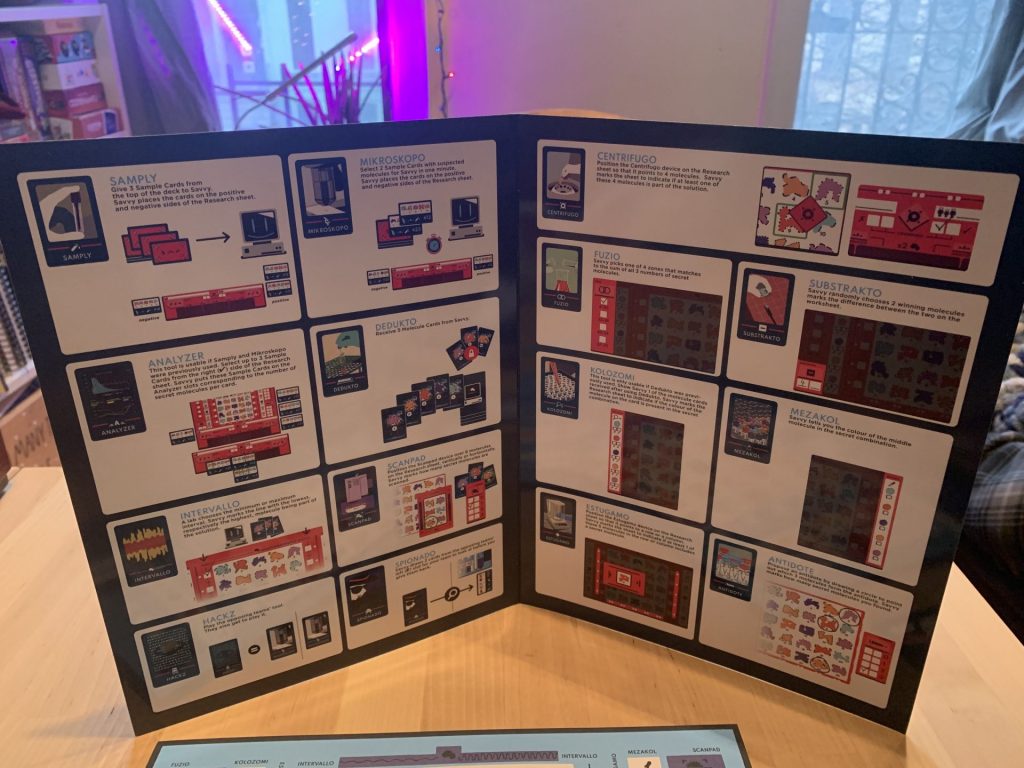
The amount that you’ll learn from a given tool is partially up to luck, and a little too up to luck for my tastes. In my review of another deduction game, Code Crackers, I talked about how luck was an obvious factor, but ultimately an unobtrusive one. This was partially because it was played over a number of rounds, so a lucky turn or a bad break didn’t have much of an effect in the long run. It also matters that I could teach you how to play Code Crackers in less than a minute. When there’s so much to learn, as in Save Patient Zero, that much luck is a dealbreaker.
I enjoy logic puzzles as much as just about anyone, but I enjoy them because of the ways that simple systems can reveal complex information. Save Patient Zero uses complex systems to reveal simple information, which feels like being told to take the long way around. To paraphrase Dr. Ian Malcolm, the game designers were so preoccupied with whether or not they could, they didn’t stop to think if they should.
(Save Patient Zero is intended to be played with an app that was not available at the time of this review. The game includes a substitute system if you wish to play without the app.)
Thought You’re With Your Uptown Friends
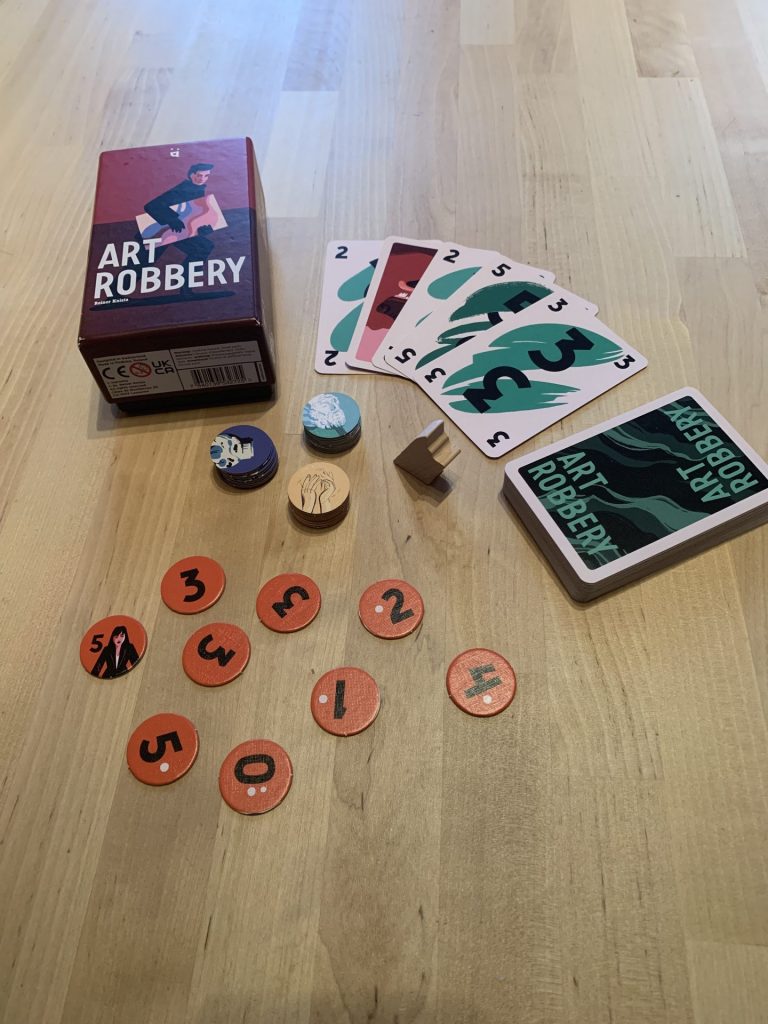
Art Robbery is quintessential, if not quite classic, Knizia. Following a series of heists, a collective of art thieves must divvy up their ill-gotten gains while being careful to shore up their individual alibis. Whoever makes off with the most loot after four rounds is the winner, but be careful; the player with the weakest alibi gets hauled away by the fuzz. A terrific theme.
The reality of the game is more abstract, as is often the case with Knizia, but he does manage to create the appropriate emotional space. Nine tokens with numbers between 0 and 5 are put in the middle of the table. Some have little white dots representing alibis. Players take turns playing cards that let them take a matching numbered token from the middle of the table or, if it has already been claimed, from the player who has it. Less “Take That!” and more “Gimme That!,” a distinction that I found surprisingly important.
Players are not entirely defenseless. For one, if someone takes the five from you, you can play a five on your turn and take it right back. Assuming you have one, of course. But there’s also the guard dog, a charming wooden silhouette of a Rottweiler that protects its owner’s chips. If someone tries to take my five and I have the guard dog, I can decide if I want them to take the chip or the dog.
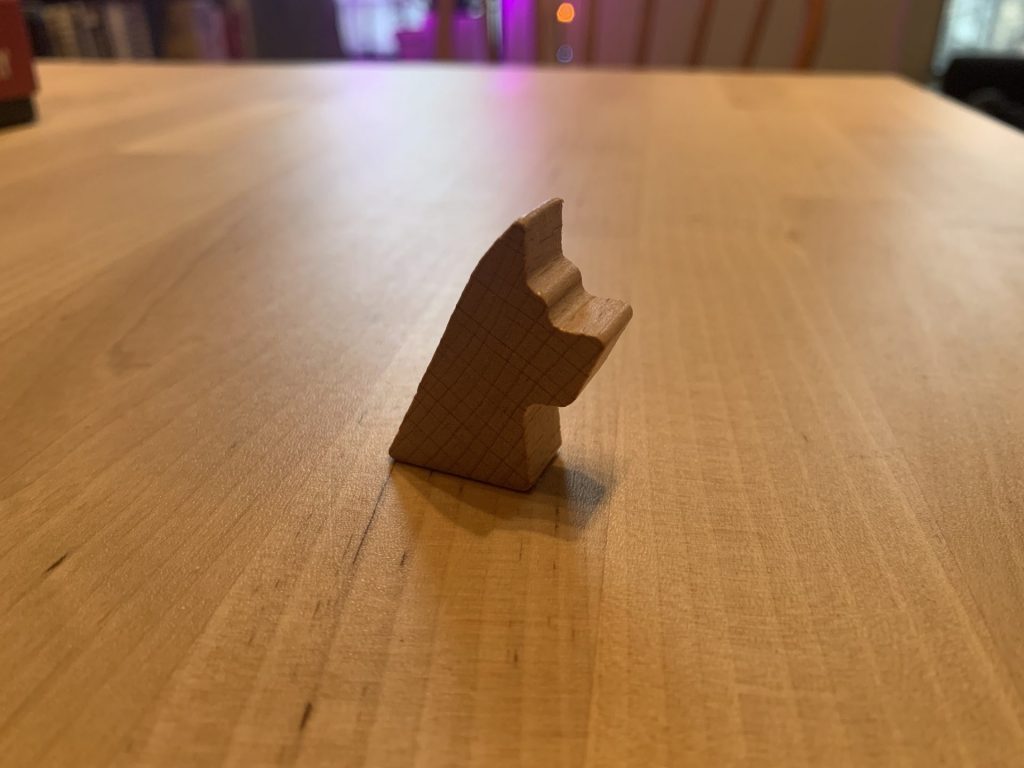
Knizia often incorporates tempo control into his designs, and Art Robbery is no exception. Each round ends when the last token is taken from the middle. Though the strategy is light, choosing whether to play for a token from the middle or from an opponent, and choosing when to do that, is a big part of the experience. Cards that let you take any chip that you want from the middle, and big point Boss tokens that are only worth points if you have the most valuable standard tokens, add to the tension.
The pace is snappy, the box is small, the rules are simple, and it’s deeply interactive, if a bit too chaotic above three players for my taste. If your play group won’t struggle with the feeling of constantly being stolen from—I don’t like Take That games and I think this is a blast— then you will likely find Art Robbery to be a delight.
Es könnte etwas größer sein
I love a heavy, complex game as much as anyone. That is not to say that Save Patient Zero is heavy, it’s not, but the approach feels like a result of the market’s trend towards the grandissimo. It is not a coincidence that, of these two titles, Art Robbery is the game that fundamentally achieves what it sets out to do. Of the two, it is the one that keeps things simple. With more and more games coming out to the market, it’s important that designers don’t lose sight of the difference between complexity and complication. While adding complications is one of the easiest ways to make your own version of something, it is seldom the best option.


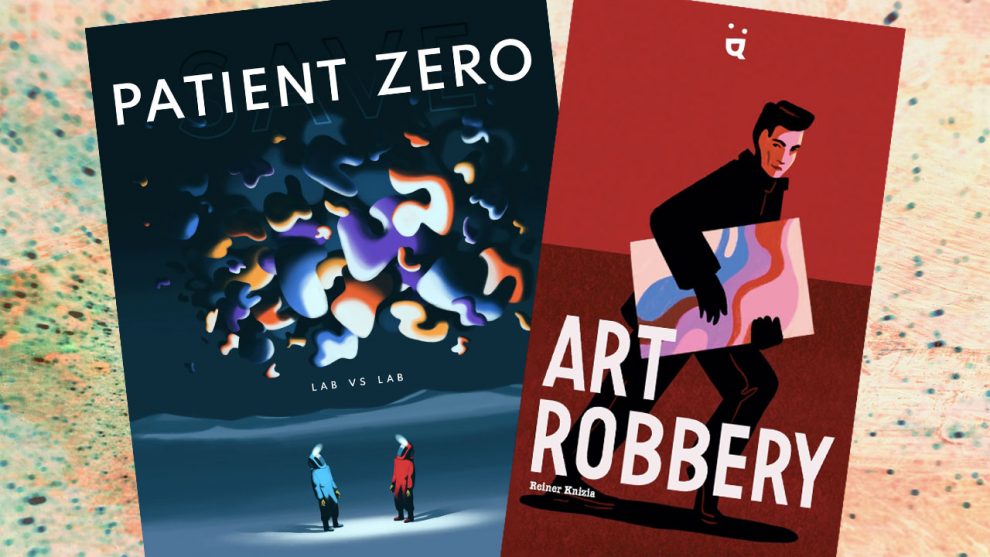



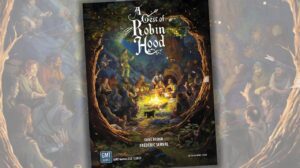
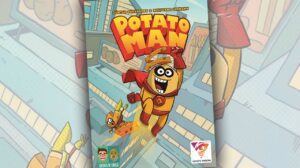




Add Comment